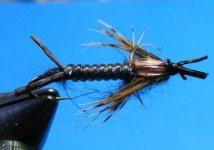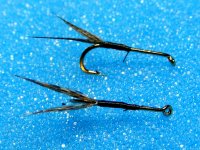O
outsider
Active member
- Joined
- May 28, 2010
- Messages
- 1,538
My nymphs are pretty much indestructable except for the tails. Does this exist?:
Synthetic tapered tails with rings/barring to use on larger nymphs like stoneflies? I use biots and other natural materials, but they are the first thing to go after several fish.
Synthetic tapered tails with rings/barring to use on larger nymphs like stoneflies? I use biots and other natural materials, but they are the first thing to go after several fish.






